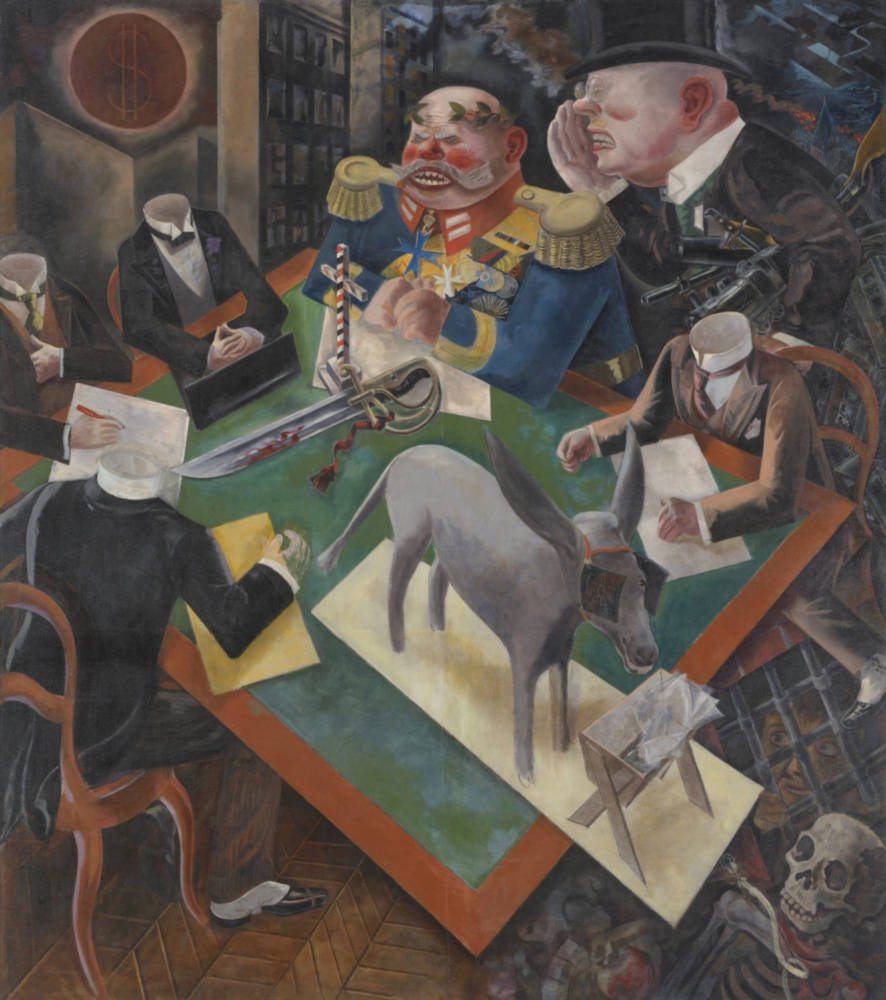In Return of the Strong Gods, R.R. Reno makes this perceptive point: In “the second half of the twentieth century, we came to regard the first half as a world-historical eruption of the evils inherent in the Western tradition, which can be corrected only by the relentless pursuit of openness, disenchantment, and weakening. The anti- imperatives are now flesh-eating dogmas masquerading as the fulfillment of the anti-dogmatic spirit.”
Reno is entirely on the mark when he tells us that fighting the “dogmas” of the past has become integral to our political culture. In Western countries, particularly in Germany, this struggle has taken the form of a perpetual battle against fascism, which has become the hallmark of what is supposedly an almost uniformly evil Western past.
In pursuit of a fascist-free society, social engineers in government and education have trampled on freedoms and engaged in nonstop persecution of those who are regarded as standing outside of necessarily leftist, political conversation. In a book, in press with Cornell University, I undertake to show how utterly pernicious antifascism has become and how little it has to do with what was once understood as fascism or Nazism.
Antifascist bigots manufacture their own dogma to combat alleged “fascist” intolerance, which by now means disagreeing with progressive gatekeepers. “Fascist” is also attached to anyone who doesn’t march in lockstep with the antifascist elites and who therefore must be destroyed socially and economically to protect a multicultural society.
Where I depart from others who may agree with these premises is in my insistence that certain political developments promoted the antifascist anti-dogma dogma. The Russian or Japanese government does not push this as a state ideology. Only Western countries promote this stuff; and there may be something specific to these societies that predispose them toward antifascist crusades.
All antifascist countries have undergone similar political and educational experiences, although the Germans previewed this transformational process with the “democratic” reeducation inflicted on them by their American and British conquerors after World War II. Such conversions are not attributable simply to the “spirit of the age,” or because of moralizing on the editorial pages of the New York Times or Le Monde. The conversion to antifascism as a state-enforced doctrine, particularly in Western Europe, has happened incrementally for quintessentially political reasons.
Although we can trace back this antifascist fixation to an earlier point, the best time to start may be after World War II, when there were already an entrenched concept of antifascist education and a new stress on universal rights that were to be globally enforced. In the 1960s first in the US and then in other Western countries, an expanding crusade against racism and its supposedly twin evil of sexism was taking place. This enthusiasm gained in intensity, partly under state sponsorship, and brought along a government apparatus to fight “prejudice” and “discrimination.”
In the US, this undertaking was bound up with fighting racial discrimination, while in Europe it built on the struggle against Nazism and colonialism. But this crusade, once begun, just went on and on. It became ever more intrusive and obsessive and enjoyed the support of myriads of administrators, an expanding media empire and a state-subsidized educational establishment.
Throughout this conversionary enterprise, the focus has been on a constant enemy “fascism,” but never communism; and those who have wielded power have conjured up the specter of Hitler, or his right-wing stand-ins to underline the perpetual threat to democracy.
The point to be underlined is that identifiable turning points and coercive policies contributed to the problem that Reno mentions. There were also actors who helped advance a particular model of “liberal democracy,” which supplanted other less controlling and less radical forms of constitutional government.
Certain variables might have made this all-controlling ideology less oppressive and less pervasive, e.g., fewer young people having their brains laundered at our universities by madcap academics, a smaller electorate made up of long resident, literate property-owners, and the absence of a centralized administrative state that in the name of social policy set out to reconstruct the family.
All these factors, and other discernible ones, contributed to the rise and continuity of our antifascist state religion. Here concrete interests came together with ideology in a war against “the evils inherent in the Western tradition.” These evil supposedly culminated in fascism, understood as both Nazi tyranny and whatever obstacles the cultural Left was opposing at a particular time.
A major vehicle for this new dogma has been the managerial class ensconced in both government and corporations. Although this class could conceivably profess non-radical values, this is not the case at the present time. Its members are out to expunge such values and the culture that created them.
Admittedly the “flesh-eating dogmas” we are addressing make no sense to me as a coherent, demonstrable set of beliefs related to any reality that I can grasp. But I am interested in knowing who is benefiting from this crescendo of madness. The old question of “cui bono?” remains relevant here.
Paul Gottfried, Ph.D., is the Raffensperger Professor Emeritus of Humanities at Elizabethtown College (PA) and a Guggenheim recipient. He is the author of numerous articles and 15 books, including, Antifascism: Course of a Crusade (forthcoming), Revisions and Dissents, Fascism: The Career of a Concept, War and Democracy, Leo Strauss and the Conservative Movement in America, Encounters: My Life with Nixon, Marcuse, and Other Friends and Teachers, Conservatism in America: Making Sense of the American Right, The Strange Death of Marxism: The European Left in the New Millennium, Multiculturalism and the Politics of Guilt: Towards A Secular Theocracy, and After Liberalism: Mass Democracy in the Managerial State. Last year he edited an anthology of essays, The Vanishing Tradition, which treats critically the present American conservative movement.
The image shows, “Eclipse of the Sun,” by George Grosz, painted in 1926.
